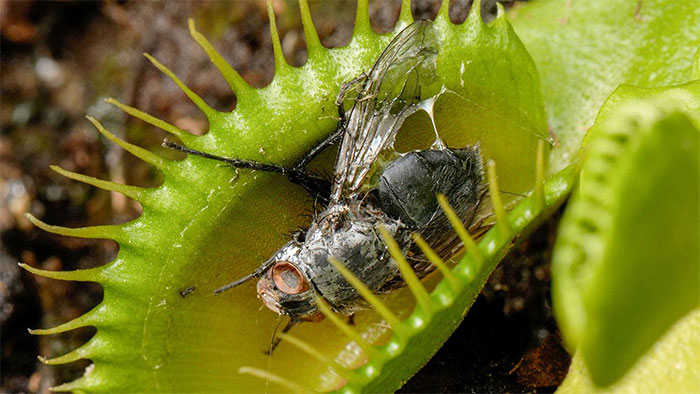The strange evolution of carnivorous plants
About 70 million years ago, dinosaurs roamed the Earth, a genetic anomaly that allowed some plants to turn into carnivores.
Transformation has given these plants several advantages. In fact, ' carnivorous plants have overturned their position in the food chain by capturing and consuming nutrient-rich prey, allowing them to thrive in nutrient-poor soils,' according to the study. published online in Current Biology.

Carnivorous plants like Venus have evolved into skillful hunters.
To investigate the evolution of carnivorous plants , an international team of botanists and biologists led by Jörg Schultz, Associate Professor at the University of Wurzburg (Germany) compared the genome and the three-tree anatomy. Related carnivores, all are members of the Droseraceae family. All three plants use motion to catch prey, the researchers said.
One of the three plant species chosen is the familiar Venus flycatcher (Dionaea muscipula) , a species that lives in the Carolina wetlands. Its close relative, the predatory algae (Aldrovanda vesiculosa) is present in the waters of most continents. Plants with thin wings in the water will quickly squeeze around unexpected marine animals. The third tree species to be investigated, the hyssop tree carrying deadly beauty (Drosera spatulata ), a common species in Australia. It attracts the victim with its sweet scent and secrete the sticky glue that sticks around its prey.
After analysis, the team discovered a three-step process towards predatory characteristics.
First , about 70 million years ago, an ancient non-carnivorous ancestor of three modern carnivore species went through the process of copying the entire genome , creating a second copy of the entire DNA. In other words, its genome. This cloning frees up one of the copies of the leaf and root genes to diversify, allowing them to serve other functions. Some leaf genes evolve into trapping genes, while the absorption and metabolism of nutrients from meat is guided by normal genes that will serve the roots in the search for nutrients from the soil.
The second step in the journey to becoming a carnivore occurs when plants begin to receive new nutrients from their prey. At that time, traditional leaves and roots were no longer needed. Many non-meat related genes begin to disappear. The result of losing this and other genes led to the three plants observed in this study were the plants with the shortest gene sequence to date.
In the third step of the conversion to carnivorous plants, plants have undergone evolutionary changes characterized by their environment . The roots and leaves evolve into a trapping characteristic. Root genes used to find and absorb nutrients from the soil are now commanded to create enzymes necessary for digesting and absorbing nutrients from prey. The genes used in nectar secretions to attract pollinators have been trapped, where they produce substances to attract prey.
Scientists have identified the three-step process shows that, over time, 'ancient non-carnivorous plants have evolved into the planet's most ingenious green hunters'.
- Extremely hidden carnivorous plants
- Whether or not Man-Eating Tree?
- Discover scary carnivorous plants in Canada
- Discover more of the terrifying ability of carnivorous plants in North America
- Bats use carnivorous plants as a toilet
- Detecting new carnivorous plants
- 'Carnivore'
- Interesting 'tricks' are used by plants during reproduction
- The richest carnivorous marsh in the world
- Super-fast prey speed of carnivorous plants
- Discovered new carnivorous plants in Japan
- The killer tree is also afraid of poison
 Why do potatoes have eyes?
Why do potatoes have eyes? 'Tragedy' the world's largest carnivorous life: Death becomes ... public toilet
'Tragedy' the world's largest carnivorous life: Death becomes ... public toilet Tomatoes were once considered 'poisonous' for 200 years
Tomatoes were once considered 'poisonous' for 200 years Detecting microscopic parasites on human face
Detecting microscopic parasites on human face